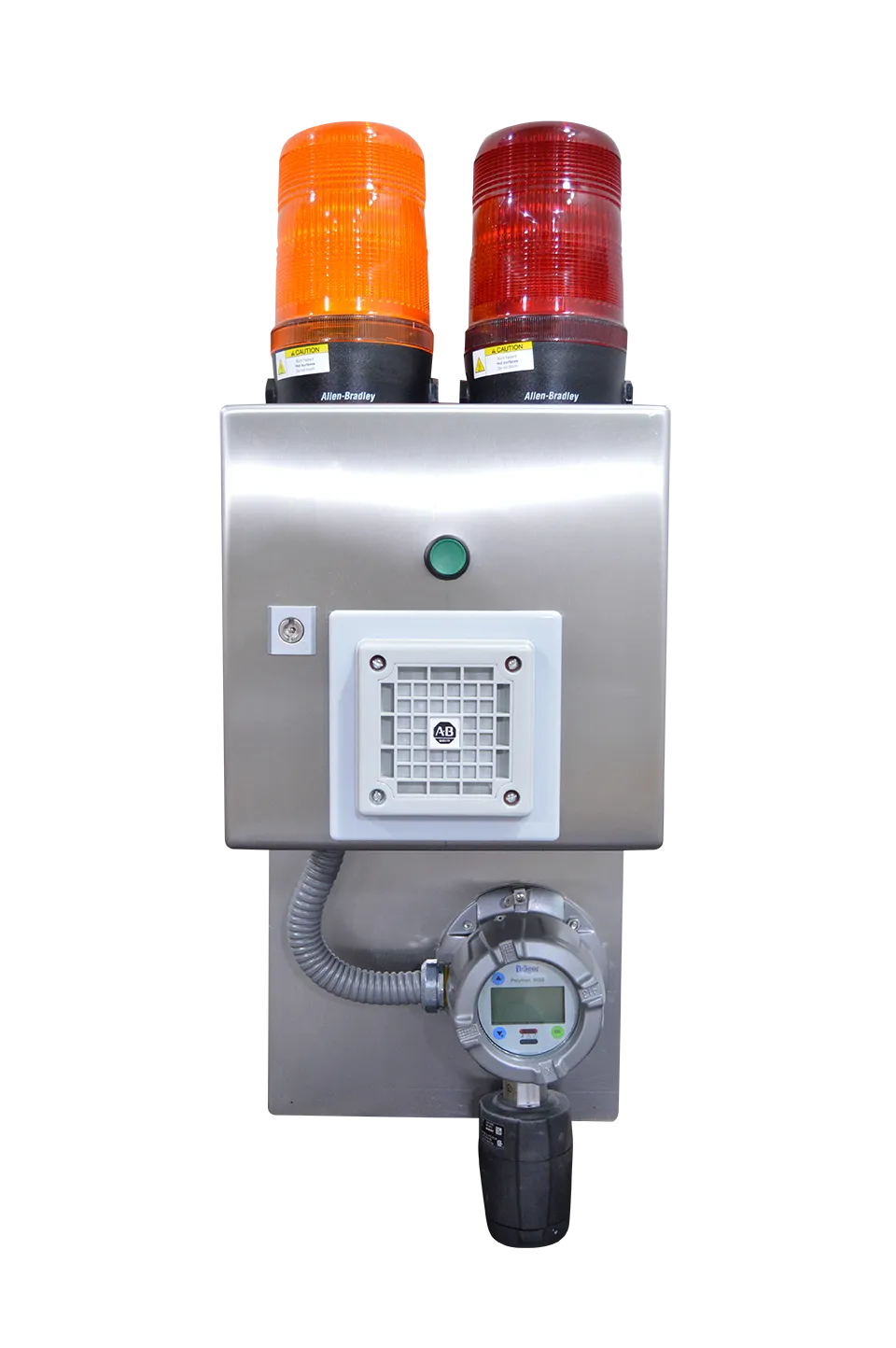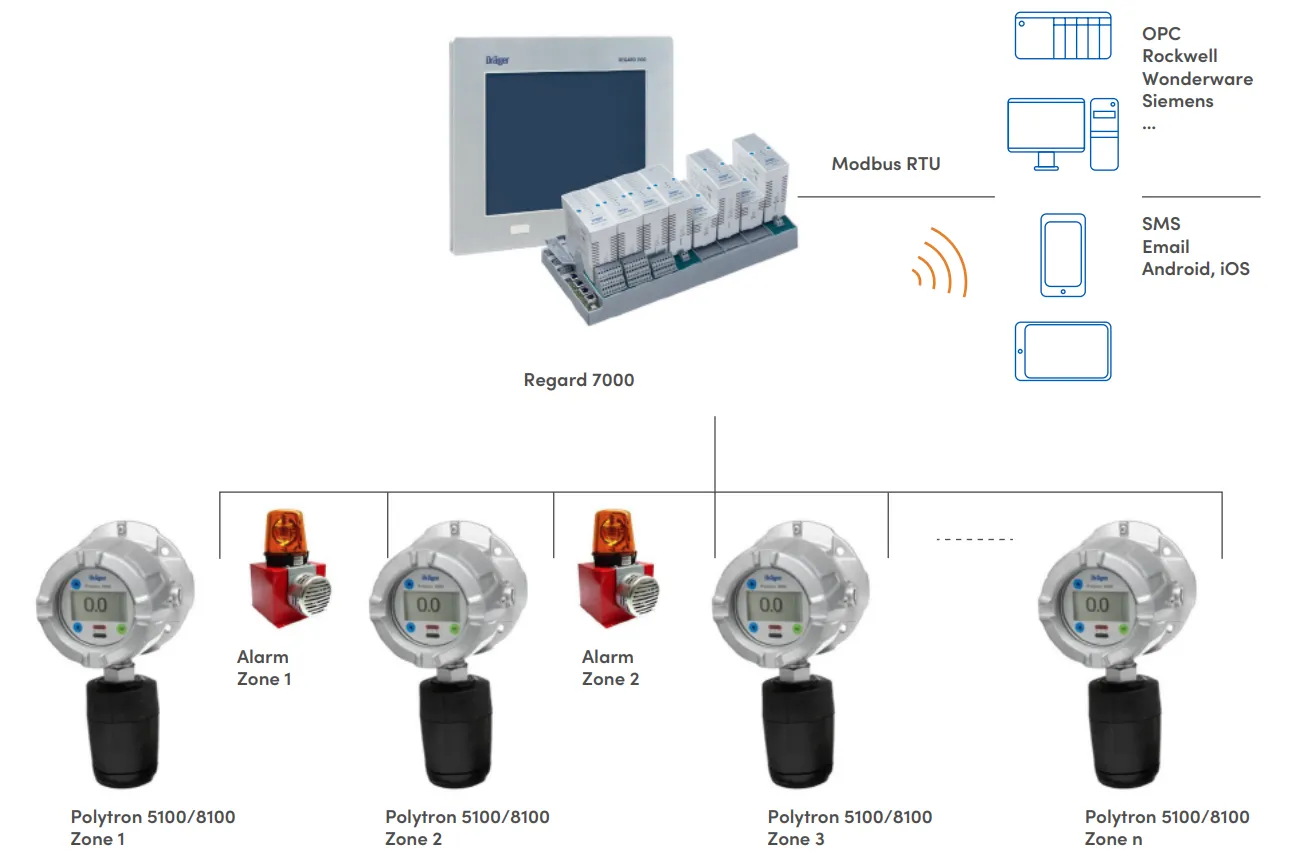Ammonia (NH3) leak detection for cooling systems
NH3 ammonia is currently the most used product for cooling systems in the food and beverage industry, at the same time this product requires handling under strict safety standards since a leak represents a high health risk for the personnel and the environment.
What could happen in case of an ammonia leak? What are some of the main health hazards related to breathing and ammonia gas?
What we should know is that ammonia gas is a severe irritator of the respiratory tract. It is perceptible by its smell at 0.6 to 53 ppm. Nose and throat irritation in concentration as low as 24 ppm after 2-6 hour exposure are some of the symptoms that can be presented. Exposure of 10 minutes at 30 ppm is slightly irritating, while 50 ppm can be considered mildly irritating. At 500 ppm, a severe throat and nose irritation occurs.
A modern gas leak detection system lowers the risk of personnel intoxication due to a possible leak by giving early alerts that can be handled without it being a hazard to the personnel or production. Exposure limits by toxicity are set by each country or regulatory entity.
At ECN Automation we have the solution for prompt detection and alarm notification in case of an ammonia gas leak.
NH3 detection and alarm systems
Stand-alone system
This system is formed by an NH3 sensor-transmitter along with an audible and visual alarm, it must be installed in the recommended areas near potential ammonia leak spots, its basic function is to set an alarm in case of surpassing allowed levels of ammonia concentration in the air.

Ammonia detection and notification network system
Highly reliable toxic gas concentration alarm and detection system

Other toxic gases that can be detected in the system:
Technical service
ECN Automation as an authorized Dräger service center has the following capacities: